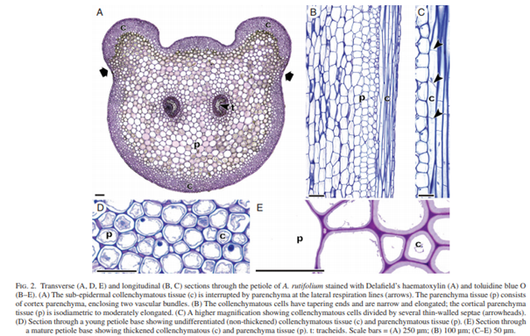Comparative in situ analysis reveals the dynamic nature of sclerenchyma cell walls of the fern Asplenium rutifolium
Abstract
• Background and Aims A key structural adaptation of vascular plants was the evolution of specialized vascular and mechanical tissues, innovations likely to have generated novel cell wall architectures. While collenchyma is a strengthening tissue typically found in growing organs of angiosperms, a similar tissue occurs in the petiole of the fern Asplenium rutifolium.
• Methods The in situ cell wall (ultra)structure and composition of this tissue was investigated and characterized mechanically as well as structurally through nano-indentation and wide-angle X-ray diffraction, respectively.
• Key Results Structurally the mechanical tissue resembles sclerenchyma, while its biomechanical properties and molecular composition both share more characteristics with angiosperm collenchyma. Cell wall thickening only occurs late during cell expansion or after cell expansion has ceased.
• Conclusions If the term collenchyma is reserved for walls that thicken during expansive growth, the mechanical tissue in A. rutifolium represents sclerenchyma that mimics the properties of collenchyma and has the ability to modify its mechanical properties through sclerification. These results support the view that collenchyma does not occur in ferns and most probably evolved in angiosperms.






